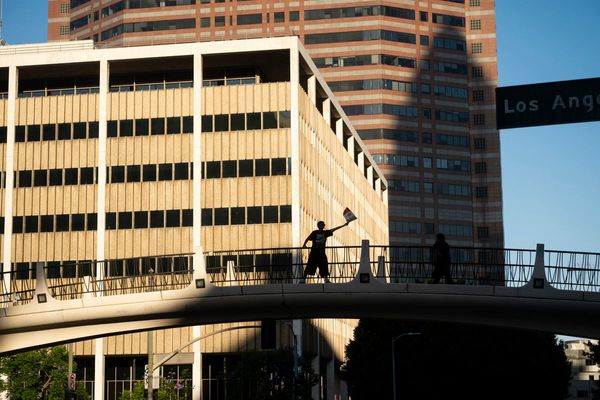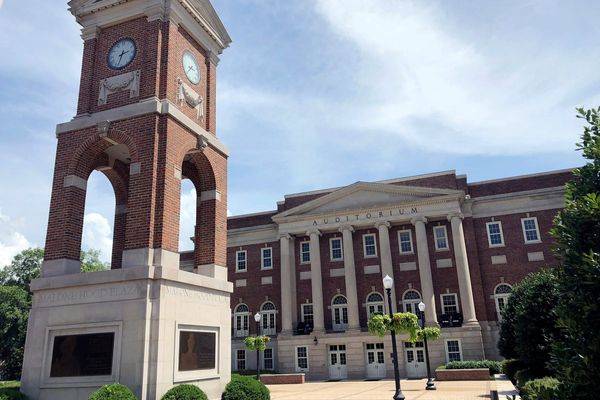
This bifurcated tale of distinct periods from the life of Beach Boy Brian Wilson plays like two different movies – jarring melodies intertwined in harmonious discord. Watching one, I found myself marvelling at Paul Dano’s uncanny portrayal of Wilson in the 60s, struggling to detect the moment when the actor’s voice segues into that of the real-life musician, dazzled by the construction of stunningly authentic-looking faux archive footage. In the other, I wondered whether it mattered that John Cusack’s 80s incarnation bore so little physical resemblance to either his subject or his on-screen counterpart, and found myself questioning the blend of fact and fiction in this latter-day tale of love’s triumph over madness and corruption.
These two strands do not intertwine with ease, but like the counterintuitive chords and juxtaposed beats of Wilson’s peerless songbook, they come together in weirdly beautiful song – a restless sea of storytelling styles upon which the narrative’s plaintive melody skitters and surfs.
The subject of Brian Wilson’s tumultuous life and creative genius has been approached before on screen – directly and tangentially. Alongside such naff TV dramatisations as 1990’s Summer Dreams: The Story of the Beach Boys, we’ve had Don Was’s insightful 1995 documentary Brian Wilson: I Just Wasn’t Made for These Times (which proved inspirational for Love & Mercy director Bill Pohlad), and Allison Anders’s still underrated Grace of My Heart (1996) in which Matt Dillon’s Jay Phillips draws heavily on Wilson’s legacy.

There’s a hint of Anders’s dextrous invention in Pohlad’s film – his first directorial outing since 1990’s Old Explorers – which opens with Wilson wondering about the source of his inspiration, and worrying: “What if I lose it and never get it back?” From here, we leap back and forth between the wilderness years of the 80s and the epochal days of the Pet Sounds and Smile sessions, watching in wonder as Wilson hears a new world and becomes increasingly detached from the old (what a fascinating double bill this would make with Nick Moran’s Telstar: The Joe Meek Story).
While Michael Alan Lerner’s original script has been thoroughly reconfigured by I’m Not There screenwriter Oren Moverman, Pohlad steps back from the stylistic adventures in which Todd Haynes cast Richard Gere, Cate Blanchett, Marcus Carl Franklin and others as fractured aspects of Bob Dylan’s personality. What he retains is an admirable non-linearity that allows Love & Mercy to make connections between disparate periods of Wilson’s life – to cut from Cusack’s Brian (a finger-twitching symphony of faraway stares and facial itches) writing the words “lonely, scared, frightened” in the 80s, to a panic attack 20 years earlier; or to juxtapose the bullying of Wilson by his father, who dismisses God Only Knows as “a suicide note” (rather than seeing it as a love song) with the tyranny of Dr Eugene Landy, who insists “I have it under control – I am the control!”

As the Svengali-like therapist-turned-captor Landy, Paul Giamatti is eye-rollingly wicked, his character as roundly demonised as Elizabeth Banks’s sympathetic Melinda Ledbetter is sanctified (Beach Boys collaborator Van Dyke Parks has called the film “Mrs Wilson’s biopic”). The period textures are more complex, Pohlad and cinematographer Robert D Yeoman rivalling the tactile detail of Paul Thomas Anderson’s Inherent Vice with their use of 16mm and 35mm stock. Where the film really flies is in the restaging of the writing and recording sessions, the use of real musicians paying dividends in the vérité evocation of Wilson’s creative process. While several riffs are familiar – the piano in the sandbox, the firehats in the studio – there’s a startling freshness to a circling sequence that brilliantly captures the birth of Good Vibrations, Wilson’s “pocket symphony to God”. Plaudits, too, to composer Atticus Ross, whose score draws on elements from Wilson’s own recorded archive to create an underwater soundscape of warring psychodramatic themes. Pohlad may offer us a Blue Velvet-style close-up of Wilson’s damaged ear (a result of his father’s beating), but the composer and sound designers take us inside his head, immersing us in a world of musical invention, by turns seductive, enchanting, and terrifying.
While Lerner (like Beach Boys biographer Steven Gaines) took his original title from the 1966/7 song Heroes and Villains, it’s significant that Pohlad’s film is named after the opening track of Wilson’s 1988 solo album, a sweet live rendition of which accompanies the end credits. With Asif Kapadia’s Amy breaking hearts and records in cinemas, Love & Mercy offers a healing vision of a troubled musician whose descent into the rabbit hole of drugs and bad company gives way to positive interventions and Hollywood resolutions. That so much of it rings true is a credit to the film-makers; that Wilson lived some (if not all) of it is a reminder of his matchless alchemical magic.







